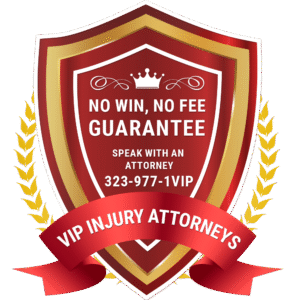Pain following an accident is not just a physical sensation—it’s an experience that can affect every aspect of your life. As your legal advocates at VIP Injury Attorneys, we understand that while we fight for your compensation, you’re fighting a daily battle with pain and discomfort. This guide is designed to help you understand your pain management options and make informed decisions about your recovery journey.
Understanding Post-Accident Pain
Pain after an accident is not a simple phenomenon. It’s a complex experience influenced by the type of injury, your personal pain threshold, prior health conditions, and even psychological factors like stress and anxiety. Before exploring management strategies, it’s important to understand some key aspects of post-accident pain:
Types of Pain You May Experience
- Acute Pain: Immediate pain that occurs directly after the accident. It’s usually sharp, intense, and temporary—a warning signal from your body that something is wrong.
- Subacute Pain: Pain that persists during the healing process, typically lasting from a few weeks to a few months as your tissues repair.
- Chronic Pain: Pain that continues beyond the normal healing period (usually defined as 3-6 months). This type of pain can be particularly challenging and may require a multifaceted treatment approach.
- Neuropathic Pain: Pain caused by damage to the nervous system itself, often described as burning, shooting, or electric-like sensations.
- Referred Pain: Pain felt in one part of the body, though the actual source is elsewhere. For example, a neck injury might cause pain that radiates down the arm.
Common Painful Conditions After Accidents
Following a car accident, motorcycle crash, or slip and fall, you might experience pain related to:
- Whiplash: Neck pain, stiffness, and reduced range of motion from the sudden forward-backward movement
- Herniated Discs: Sharp, shooting pain, numbness, or weakness when spinal discs are damaged
- Sprains and Strains: Pain and swelling in muscles and ligaments
- Fractured Bones: Intense pain, swelling, and loss of function in the affected area
- Traumatic Brain Injuries: Headaches and other neurological symptoms
- Spinal Cord Injuries: Pain, numbness, or tingling from damage to the spinal cord
- Nerve Compression: Radiating pain, numbness, or weakness when nerves are pinched or compressed
- Soft Tissue Injuries: Pain from damage to muscles, tendons, and other non-bony tissues
Creating Your Pain Management Plan
Every accident victim’s experience with pain is unique, and there is no one-size-fits-all approach to pain management. However, a comprehensive pain management plan typically includes multiple strategies that work together to provide relief while supporting your body’s healing process.
The Importance of Professional Guidance
Before implementing any pain management strategy, it’s crucial to have a proper medical evaluation. Self-diagnosis and self-treatment can lead to complications or delayed healing. Your healthcare providers will help create a personalized pain management plan based on:
- The specific nature and location of your injuries
- The severity and character of your pain
- Your medical history and any pre-existing conditions
- Your personal preferences and comfort levels with different treatments
- Your recovery goals
This individualized approach ensures that your pain management strategy addresses your unique needs rather than applying generic solutions.
Medication-Based Pain Management Options
Medications often form the first line of defense against post-accident pain, especially in the acute stage. Here are the common types of pain medications you might encounter:
Over-the-Counter (OTC) Pain Relievers
- Acetaminophen (Tylenol): Reduces pain signals in the brain without addressing inflammation. It’s generally easier on the stomach than NSAIDs but may be less effective for injuries with significant inflammation.
- Nonsteroidal Anti-Inflammatory Drugs (NSAIDs): These include ibuprofen (Advil, Motrin), naproxen (Aleve), and aspirin. They reduce both pain and inflammation but may cause stomach irritation or bleeding with prolonged use.
Prescription Medications
For more severe pain, your doctor might prescribe:
- Prescription-Strength NSAIDs: Higher doses than OTC versions, providing stronger anti-inflammatory effects.
- Muscle Relaxants: Help reduce muscle spasms and associated pain. Examples include cyclobenzaprine (Flexeril) and baclofen.
- Nerve Pain Medications: For neuropathic pain, medications like gabapentin (Neurontin) or pregabalin (Lyrica) may help by calming overactive nerve signals.
- Antidepressants: Some antidepressants, particularly tricyclic antidepressants and SNRIs, can help manage pain by affecting neurotransmitters involved in pain signaling.
- Opioid Analgesics: These powerful pain relievers (such as hydrocodone, oxycodone, or morphine) are typically reserved for severe acute pain and prescribed for short periods due to potential side effects and risk of dependence.
Important Considerations for Medication Use
- Always follow prescribed dosages and schedules
- Communicate openly with your healthcare provider about any side effects
- Disclose all medications you’re taking to avoid harmful interactions
- Understand that most pain medications have potential side effects and should be used judiciously
- Be aware that opioids are typically intended for short-term use during the acute phase of recovery
Non-Pharmaceutical Pain Management Approaches
While medications play an important role in pain management, non-pharmaceutical approaches offer additional relief without the potential side effects associated with medications. These approaches can be particularly valuable for long-term pain management:
Physical Therapy
Physical therapy is a cornerstone of post-accident recovery and pain management. A skilled physical therapist can:
- Design targeted exercises to strengthen injured areas
- Improve flexibility and range of motion
- Correct movement patterns that might be contributing to pain
- Apply hands-on techniques to release tight tissues
- Teach proper body mechanics to prevent re-injury
Research consistently shows that appropriate physical activity not only helps manage pain but also accelerates healing and improves long-term outcomes after injuries.
Chiropractic Care
Chiropractic adjustments can help:
- Restore proper alignment of the spine and joints
- Reduce pressure on compressed nerves
- Improve mobility in restricted areas
- Decrease muscle tension and spasms
- Promote natural healing through improved circulation
Many accident victims find that regular chiropractic care provides significant pain relief, especially for neck and back injuries.
Massage Therapy
Therapeutic massage offers several benefits for pain management:
- Relaxes tense muscles that may be contributing to pain
- Improves circulation to injured tissues
- Reduces stress and anxiety that can amplify pain perception
- Breaks up adhesions and scar tissue that may restrict movement
- Triggers the release of endorphins, your body’s natural pain relievers
Different massage techniques may be appropriate depending on your specific injuries and stage of healing.
Heat and Cold Therapy
These simple but effective treatments can be done at home:
- Cold therapy (cryotherapy): Reduces inflammation, swelling, and acute pain by constricting blood vessels and numbing nerve endings. Best used in the first 24-72 hours after injury.
- Heat therapy (thermotherapy): Increases blood flow, relaxes muscles, and improves tissue elasticity. Most beneficial after the acute inflammatory phase has passed.
Your healthcare provider can guide you on which approach is appropriate for your specific condition and when to transition from cold to heat.
TENS Units (Transcutaneous Electrical Nerve Stimulation)
These portable devices deliver mild electrical currents through electrodes placed on the skin near painful areas:
- Blocks pain signals traveling to the brain
- Stimulates the release of endorphins
- Provides temporary relief for various pain conditions
- Can be used at home as part of your ongoing pain management plan
Acupuncture
This traditional Chinese medicine technique involves inserting thin needles at specific points on the body:
- May help release natural pain-killing chemicals in the body
- Can reduce inflammation and muscle tension
- Has shown effectiveness for various pain conditions in clinical studies
- Works well as a complementary therapy alongside conventional treatments
Mind-Body Approaches
Don’t underestimate the power of these techniques in managing pain:
- Meditation and mindfulness: Helps change your relationship with pain and reduce the suffering associated with it
- Relaxation training: Reduces muscle tension and stress that can amplify pain
- Guided imagery: Distracts from pain and promotes a sense of control
- Biofeedback: Teaches you to regulate bodily functions that might contribute to pain
- Cognitive-behavioral therapy: Addresses negative thought patterns that can make pain feel worse
Research shows that these approaches can significantly improve pain management outcomes when combined with other treatments.
Interventional Pain Management Procedures
For persistent pain that doesn’t respond adequately to medications and non-pharmaceutical approaches, various medical procedures might be recommended:
Injection Therapies
- Epidural Steroid Injections: Anti-inflammatory medication injected into the epidural space around the spinal cord to reduce inflammation and pain, particularly for conditions like herniated discs.
- Facet Joint Injections: Target the small joints in the spine that can become painful after an accident.
- Trigger Point Injections: Address specific “knots” or tender points in muscles that cause pain.
- Nerve Blocks: Temporarily interrupt pain signals from specific nerves to provide relief and help diagnose the source of pain.
Advanced Interventions
For complex or severe chronic pain, more intensive interventions might be considered:
- Radiofrequency Ablation: Uses heat generated by radio waves to disrupt nerve function and reduce pain signals.
- Spinal Cord Stimulation: Implanted devices that send mild electrical pulses to the spinal cord to interfere with pain signals.
- Intrathecal Pain Pumps: Deliver pain medication directly to the spinal fluid for maximum effect with minimal systemic side effects.
These procedures are generally considered only after more conservative treatments have proven ineffective. Because they can be highly expensive, they must be carefully evaluated by pain management specialists—and always with the personal injury case’s policy limits in mind.
Creating a Holistic Pain Management Strategy
The most effective pain management typically involves a combination of approaches tailored to your specific situation. Here’s how to develop a comprehensive strategy:
Work With a Multidisciplinary Team
Different healthcare providers bring different expertise to your recovery:
- Primary Care Physician: Coordinates your overall care
- Orthopedic Specialist: Focuses on bone, joint, and soft tissue injuries
- Neurologist: Addresses nerve-related pain and conditions
- Pain Management Specialist: Offers expertise in complex or persistent pain
- Physical Therapist: Provides hands-on treatment and exercise guidance
- Chiropractor: Performs adjustments to improve alignment and function
- Mental Health Professional: Helps with the psychological aspects of pain and recovery
Track Your Pain and Progress
Keeping a pain journal can be invaluable for both you and your healthcare team:
- Record your daily pain levels (on a scale of 0-10)
- Note activities that increase or decrease your pain
- Track medications taken and their effectiveness
- Document side effects from treatments
- Monitor your sleep, mood, and energy levels
- Celebrate improvements and milestones, no matter how small
This information helps identify patterns and refine your treatment approach over time.
Set Realistic Expectations and Goals
Recovering from accident-related pain is often a marathon, not a sprint:
- Understand that healing takes time and rarely follows a straight line
- Set small, achievable goals related to function rather than focusing solely on pain reduction
- Celebrate progress in your ability to perform daily activities
- Recognize that some days will be better than others
- Work with your healthcare team to adjust expectations when needed
- Keep in mind that the treatment options available may be influenced by the at-fault party’s insurance policy limits and/or your uninsured/underinsured motorist coverage, which can impact the scope and duration of care that’s realistically attainable.
Consider the Psychological Aspects of Pain
Pain is not just a physical experience—it has emotional and psychological dimensions:
- Chronic pain can contribute to depression, anxiety, and sleep disturbances
- Stress and emotional distress can amplify pain perception
- Addressing psychological factors can significantly improve pain management outcomes
- Don’t hesitate to seek support from mental health professionals who specialize in pain management
Special Considerations for Chronic Pain
If your pain persists beyond the normal healing time (typically 3-6 months), you may be dealing with chronic pain, which requires special attention:
Understanding Chronic Pain Development
Chronic pain is not simply acute pain that continues—it involves changes in how your nervous system processes pain signals:
- The nervous system becomes more sensitive, responding more strongly to pain signals
- Pain pathways become more efficient at transmitting signals
- The brain may continue to interpret pain even after the original injury has healed
These changes mean that chronic pain requires different management strategies than acute pain.
Comprehensive Chronic Pain Management
For chronic pain after an accident:
- Focus shifts from “curing” the pain to effectively managing it
- Emphasis on improving function and quality of life
- Greater importance placed on non-pharmaceutical approaches
- More attention to psychological and lifestyle factors
- Consideration of pain rehabilitation programs that address multiple aspects of pain
The Role of Your Legal Team in Pain Management
At VIP Injury Attorneys, we understand that effective pain management is a crucial part of your recovery journey. While we focus on securing the compensation you deserve, we can also support your pain management efforts by:
- Connecting you with qualified healthcare providers who understand accident-related injuries
- Ensuring proper documentation of your pain and treatments for your case
- Fighting for coverage of necessary pain management treatments by insurance companies
- Addressing the financial stress that can worsen pain by pursuing fair compensation
- Advocating for your long-term needs if you develop chronic pain conditions
We recognize that your physical recovery is just as important as your financial recovery, and we’re committed to supporting both.
When to Seek Additional Help
Contact your healthcare provider promptly if you experience:
- Sudden increase in pain intensity or new pain
- Pain accompanied by numbness, weakness, or loss of function
- Side effects from medications or treatments
- Pain that significantly interferes with sleep or daily activities
- Signs of depression or anxiety related to your pain
- Thoughts of self-harm or suicide (also call the National Suicide Prevention Lifeline at 988)
Taking Control of Your Recovery
Pain after an accident can be overwhelming, but you don’t have to face it alone. With the right support team and management strategies, most accident victims can achieve significant improvement in their pain and quality of life.
Remember that you are not just a passive recipient of treatment—you are an active participant in your recovery. By educating yourself about pain management options, communicating openly with your healthcare providers, and advocating for your needs, you play a crucial role in your healing journey.
When injury strikes, life can turn upside down.
Medical bills pile up, work becomes impossible, and the future feels uncertain. Don’t face this alone. VIP Injury Attorneys stand in your corner, every step of the way.
Let us help you fight for the treatment you need and the compensation you deserve. We offer a “No Win, No Fee” guarantee! So don’t settle for less than VIP treatment. Contact us today for a free consultation and let us take the fight off your shoulders. We’ll handle the legal battles while you focus on healing and rebuilding your life.
Stay updated on important legal and insurance changes by subscribing to our newsletter or following us on Facebook, YouTube, Instagram, and TikTok.





